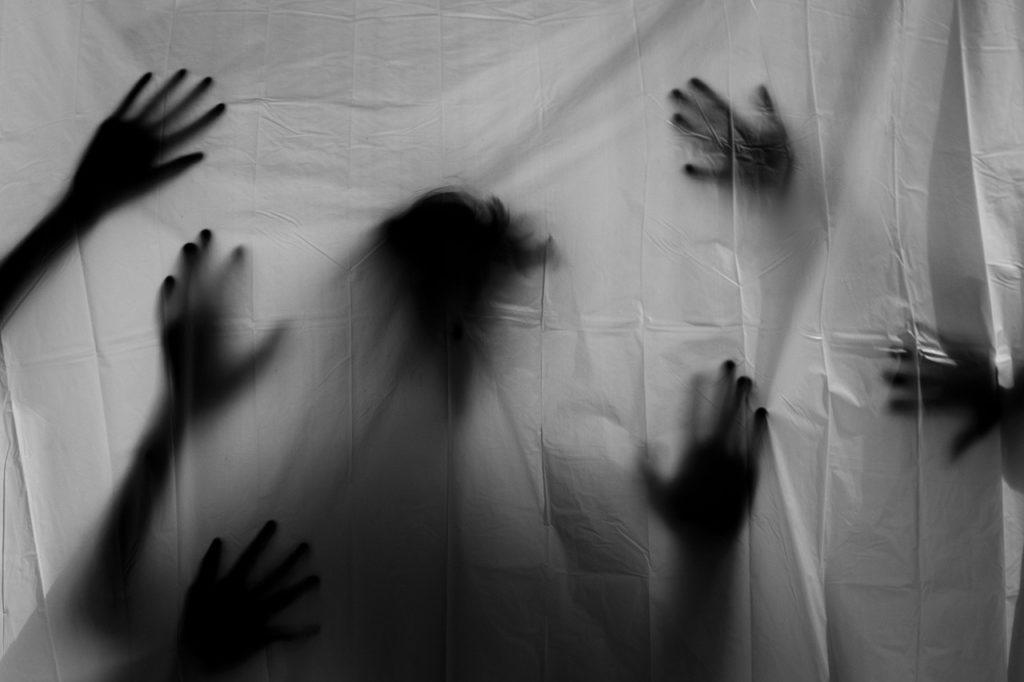Freaky Phenomena: Making the paranormal, normal
by Scott Dutfield · 21/10/2019

Don’t be alarmed – science shows that the paranormal is normal after all
We are masters of pattern recognition, taking in vast quantities of data and searching for the links that make sense of the world around us. As humans, we are always seeking to explain the unexplained, and there’s nothing we find more disturbing than not being able to find an answer.
For centuries, the paranormal explained the unexplained, but now science is stepping in. Think you’ve seen a ghost? You’re probably over tired. Sure you’ve heard voices in a backwards music track? It’s more likely to be your brain desperately looking for patterns. Extraordinary occurrences almost always have a mundane explanation.
Sleep paralysis
Waking to the awful feeling that you’ve lost control of your limbs can be terrifying, but sleep paralysis is essential to keep you safe at night. When we dream during rapid eye movement (REM) sleep, our brains run through vivid simulations and try to send messages to our muscles. But two signalling chemicals, gamma-aminobutyric acid (GABA) and glycine, stop messages reaching the motor neurons. This prevents us from acting out our dreams and harming ourselves and others, but sometimes the system can malfunction. The frightening experience of sleep paralysis happens when our brains enter this dream-like state when we’re still awake. It’s rare, but occurs more often if we’re over tired, have jet lag or work irregular shifts that mess with our body clocks.
Seeing faces

Have you ever woken up in the middle of the night to find a figure looming over your bed, only to realise that it’s actually a pile of clothes? Or perhaps you’ve seen a spooky face peering in through your window only to have it disappear when the wind ruffles the leaves. You might have experienced pareidolia. The word literally means ‘wrong image’, and it’s down to the way our brains search for patterns. We process a constant stream of sensory information, and our brains have fractions of seconds to make decisions. This means storing and recalling simple patterns so that we can quickly scan through the noise. In much the same way as your smartphone camera looks for patterns to draw boxes around faces, your brain hones in on anything that might have two eyes and a mouth.
Out-of-body experiences
Few experiences could be weirder than finding yourself looking down at your own body from above. However, there may be a solid scientific explanation. People with certain neurological disorders are more likely to have an out-of-body experience, so studying their brains can reveal clues about why they happen.
In 2002, while undergoing an evaluation for epilepsy, a patient allowed scientists to insert electrical signals into their brain. Some of these signals triggered an out-of-body experience. The part of the brain responsible was the right angular gyrus, which links information from the eyes and the inner ear. The inner ear contains a set of fluid-filled tubes that work as the body’s spirit level. Problems here can literally throw you off balance, triggering a spell of dizziness, floating feelings and disorientation.
A larger study in 2017 found that people with inner ear problems were almost three times as likely to have had an out-of-body experience. It seems that a mismatch between what you see and what you feel can trick your brain into thinking that you’ve left your body behind.
This article was originally published in How It Works issue 117 written by Laura Mears
For more science and technology articles, pick up the latest copy of How It Works from all good retailers or from our website now. If you have a tablet or smartphone, you can also download the digital version onto your iOS or Android device. To make sure you never miss an issue of How It Works magazine, subscribe today!





